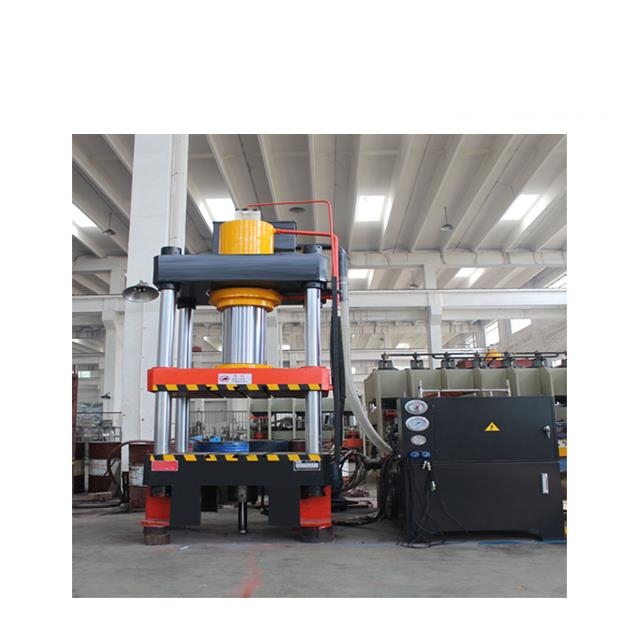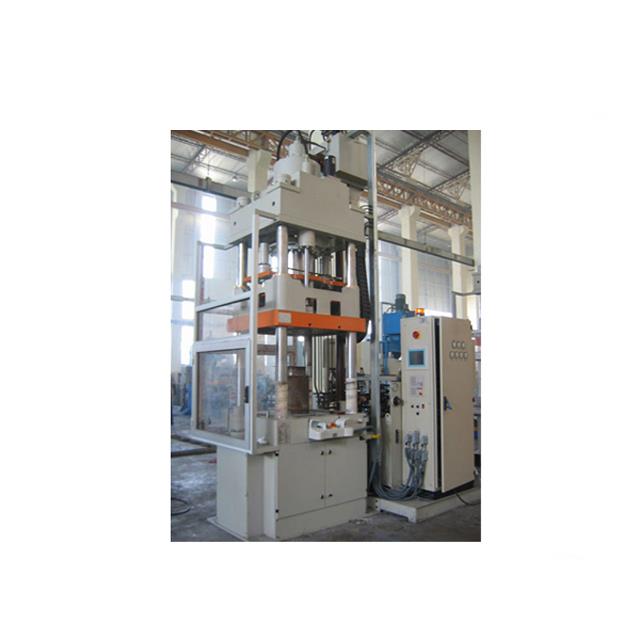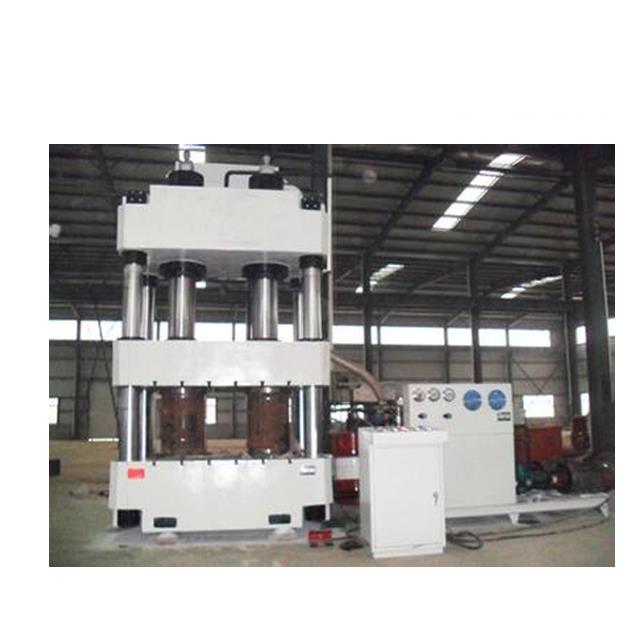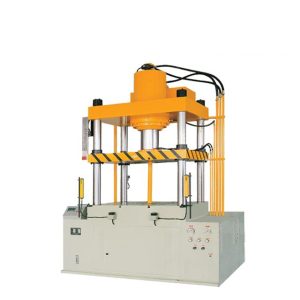What is a Hydraulic Press?
A hydraulic press is a machine that uses hydraulic principles to generate immense pressure. It consists of a hydraulic cylinder, a hydraulic pump, and a control system. The hydraulic pump delivers hydraulic fluid to the hydraulic cylinder, and the piston inside the hydraulic cylinder moves under the pressure of the hydraulic fluid, thus generating enormous pressure. Hydraulic presses are widely used in industrial production, such as metal forming, automobile manufacturing, aerospace, mining, and other fields.
The Principle of a Hydraulic Press
The working principle of a hydraulic press is very simple. It utilizes Pascal’s principle to generate enormous pressure. Pascal’s principle states that in a closed fluid system, pressure applied at any point is transmitted equally to every other point in the fluid. Therefore, when the hydraulic pump delivers hydraulic fluid to the hydraulic cylinder, the pressure in the hydraulic cylinder is transmitted evenly to the piston, thus generating immense pressure.

Types of Hydraulic Presses
Hydraulic presses can be classified into vertical hydraulic presses and horizontal hydraulic presses based on their structure. Vertical hydraulic presses have the hydraulic cylinder placed vertically, while horizontal hydraulic presses have the hydraulic cylinder placed horizontally. Vertical hydraulic presses are generally used for forming large workpieces, while horizontal hydraulic presses are generally used for forming small workpieces.
Hydraulic presses can also be classified into general-purpose hydraulic presses and special-purpose hydraulic presses based on their application. General-purpose hydraulic presses can be used for forming various workpieces, while special-purpose hydraulic presses can only be used for forming specific workpieces.

Advantages of Hydraulic Presses
Hydraulic presses have the following advantages:
- High pressure: Hydraulic presses can generate enormous pressure, so they can be used to form workpieces of various hardness and shapes.
- High precision: The pressure of a hydraulic press can be precisely controlled, so it can be used to produce high-precision workpieces.
- Fast speed: The hydraulic pump of a hydraulic press can operate at high speed, so it can form workpieces quickly.
- High safety: A hydraulic press is a relatively safe machine because its hydraulic system is closed and there is no leakage.
Disadvantages of Hydraulic Presses
Hydraulic presses also have some disadvantages, such as:
- Large size: Hydraulic presses are usually large in size, so they require a large installation space.
- High noise: The hydraulic pump of a hydraulic press generates a lot of noise when operating.
- High energy consumption: Hydraulic presses consume a lot of energy when operating.

Applications of Hydraulic Presses
Hydraulic presses are widely used in industrial production, such as:
- Metal forming: Hydraulic presses can be used to form various metal workpieces, such as automotive parts, aircraft parts, and machinery parts.
- Automobile manufacturing: Hydraulic presses can be used to manufacture automotive parts, such as car bodies, engines, and transmissions.
- Aerospace: Hydraulic presses can be used to manufacture aircraft parts, such as fuselages, wings, and engines.
- Mining: Hydraulic presses can be used to mine ores, such as coal, iron ore, and copper ore.
Conclusion
A hydraulic press is a powerful industrial tool that can be used to form workpieces of various hardness and shapes. Hydraulic presses have the advantages of high pressure, high precision, fast speed, and high safety. However, hydraulic presses also have some disadvantages, such as large size, high noise, and high energy consumption. Hydraulic presses are widely used in industrial production, such as metal forming, automobile manufacturing, aerospace, mining, and other fields.



